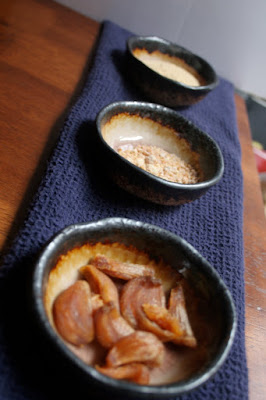Low-Technique: Manual Sous Vide
If you had told someone you were going to cook sous-vide, they would have probably looked at you like you had two faces. And if they did, by some chance, know what sous vide cooking was, they would have thought you had over a thousand dollars worth of equipment. Now-a-days, with home appliances like the Sous Vide Magic and the Sous Vide Supreme, people would think that you were cooking with several hundreds of dollars of equipment.
The truth is, all you really need to cook utilizing the sous-vide method is the ability to put some plastic-wrapped product into a temperature controlled container of water. While not the first to do it, Martin Lersch made a sous vide rib-eye just by using a big pot of water, a thermometer and a plastic bag.
This is not your only option. If you don't like the idea of having a constant heat source going (e.g. the burner or you can also take the pot and try and put it in the oven), you can also use J. Kenji Lopez-Alt's beer cooler sous vide technique. The nice thing about this is that you don't have to watch it during the cooking process the way you do with the oven/burner methods. Fill up the container with hot water and put in your product. The other nice thing about this approach is the amount of space you have in the cooler.
Let's compare using my handy dandy chart that is guaranteed only to exist and not be accurate in any way:
Finally, my best advice for manual sous vide cookery is to:
The truth is, all you really need to cook utilizing the sous-vide method is the ability to put some plastic-wrapped product into a temperature controlled container of water. While not the first to do it, Martin Lersch made a sous vide rib-eye just by using a big pot of water, a thermometer and a plastic bag.
This is not your only option. If you don't like the idea of having a constant heat source going (e.g. the burner or you can also take the pot and try and put it in the oven), you can also use J. Kenji Lopez-Alt's beer cooler sous vide technique. The nice thing about this is that you don't have to watch it during the cooking process the way you do with the oven/burner methods. Fill up the container with hot water and put in your product. The other nice thing about this approach is the amount of space you have in the cooler.
Let's compare using my handy dandy chart that is guaranteed only to exist and not be accurate in any way:
Finally, my best advice for manual sous vide cookery is to:
- Bring food up to temperature prior to dropping it in the water. The colder your food is when it goes into the water bath the bigger the temperature hit will be (A frozen chicken breast is a giant ice cube).
- Monitor food and water temperature while cooking.
- Make sure that when your product comes out of the water bath, you immediate verify its temperature with an accurate thermometer. There is a line between incredibly moist and food poisoning, know which side of it you are on.
- Sear food when it comes out of the bag.




http://www.hertzmann.com/articles/miscellany/tools.php
ReplyDeletecheck out "Passive low-temperature cooking calculator"
@D:
ReplyDeleteThat's pretty excellent. Have you gotten good results from it?
I have a deep electric skillet that I have done a pork roast in. (160f for 24 hours) came out well, but there was a bunch of variance while I was at work and unable to tend it. I am glad to have a hot-plate with precision controller now.
ReplyDelete